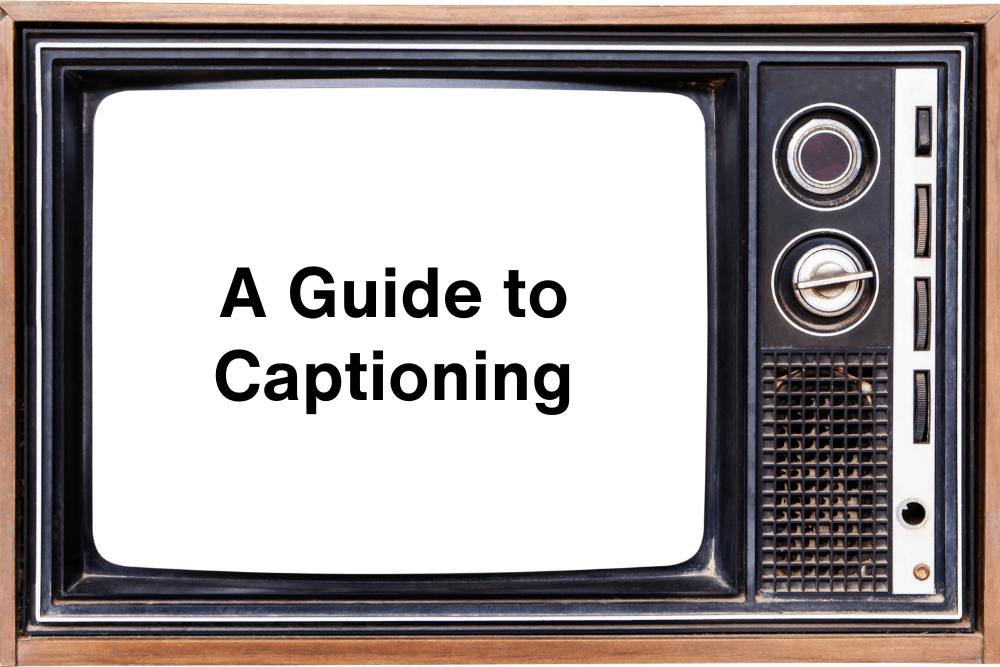You will have encountered them countless times: scrolling across your TV screen at the gym, appearing beneath a video in a bustling airport terminal, or helping you follow along with a late-night movie without disturbing others. Captions have become so integrated into our digital landscape that we often take them for granted. Yet their significance extends far beyond mere convenience. They represent a fundamental bridge to accessibility, communication, and inclusive learning.
But what transforms simple text overlay into truly effective captioning? Who relies on this technology, and how has it evolved to meet diverse needs across our increasingly connected world? This guide explores the art, science, and essential service of captioning in today’s media ecosystem.
More Than Words on Screen
Captioning is the systematic process of converting spoken audio, environmental sounds, and musical elements from videos, broadcasts, or live events into synchronized text displayed on screen. Professional-grade captioning is more than basic transcription, it’s a nuanced craft that captures the complete auditory experience.
The Essential Elements of Complete Captioning
Dialogue and Narration: Every spoken word, including stutters, false starts, and verbal fillers when they contribute to meaning or character development.
Speaker Identification: Clear indication of who is speaking, particularly crucial during multi-person conversations, off-camera dialogue, or when speakers change rapidly. This might appear as “[SARAH]” or through strategic positioning of captions.
Non-Speech Audio: Environmental sounds, music, and sound effects that contribute to understanding or atmosphere. Examples include “[thunder rumbling],” “[phone buzzing],” “[somber piano music],” or “[crowd cheering].”
Emotional and Tonal Context: Descriptions that convey how something is said when it affects meaning, such as “[sarcastically]” or “[whispering].”
The Four Pillars of Professional Captioning
Exceptional captioning rests on four fundamental principles that separate amateur efforts from professional-grade accessibility:
1. Accuracy & Equivalence
The caption text must provide complete informational parity with the audio content. This means achieving 99% accuracy in dialogue transcription while including all relevant non-speech information. Captions should be verbatim when possible, with strategic editing only when necessary for readability or timing constraints.
2. Synchronicity
Captions must appear within 1-3 seconds of the corresponding audio, creating seamless integration between what viewers hear and read. Poor synchronization not only frustrates viewers but can fundamentally alter comprehension, especially in educational or instructional content.
3. Accessibility Standards
Text must be easily readable across all viewing conditions, here’s a quick checklist:
- Font size: Large enough to read comfortably (typically 22-point minimum)
- Contrast: High contrast against backgrounds (white text on black boxes is standard)
- Duration: Each caption frame should remain visible long enough to read comfortably
- Line breaks: Strategic placement that doesn’t split phrases awkwardly
4. Strategic Placement
Captions should appear near relevant visual elements without obscuring critical on-screen information. When speakers are visible, captions often appear near them. For presentations or educational content, placement must not block important visual materials.
The Wide-Reaching Impact of Captioning
Primary Beneficiaries: The Deaf and Hard of Hearing Community
For over 48 million Americans living with hearing loss, captions provide essential access to information, education, entertainment, and emergency communications. This represents roughly 15% of the US adult population, a significant community whose needs drive captioning innovation and legal requirements.
The Americans with Disabilities Act (ADA) and Section 508 of the Rehabilitation Act mandate captioning in many contexts, recognizing it as a civil rights issue rather than an optional accommodation. The National Association of the Deaf provides comprehensive guidance on when captioning is required across various settings.
A Broader Audience
English Language Learners: Research shows that captions can improve vocabulary acquisition by up to 17% and enhance pronunciation understanding. For the 25.5 million Americans who speak English as a second language, captions provide crucial support for language development.
Literacy Development: Studies demonstrate that children who regularly watch captioned content show improved reading skills, spelling accuracy, and vocabulary comprehension. Adult literacy programs increasingly incorporate captioned video as a teaching tool.
Processing and Learning Differences: Individuals with auditory processing disorders, ADHD, or dyslexia often find captions helpful for maintaining focus and comprehension during video content.
Universal Situations: Beyond specific needs, captions serve everyone in noisy environments (gyms, public spaces), quiet settings (libraries, bedrooms), or when audio quality is poor.
Understanding Your Options
Open vs. Closed Captions
Open Captions are permanently embedded in the video file and cannot be disabled.
They’re ideal for:
- Social media content where caption control isn’t available
- Public displays where viewers can’t control settings
- Ensuring universal access regardless of device capabilities
Closed Captions can be toggled on or off by viewers and are preferred for:
- Streaming platforms and professional video content
- Educational materials where some viewers may not need them
- International content where multiple caption tracks exist
Pre-recorded vs. Real-Time
Pre-recorded Captioning allows for maximum accuracy and polish. Professional captioners can research proper nouns, verify technical terminology, and ensure perfect synchronization. This process typically takes 3-10 times the length of the original video.
Real-Time Captioning provides immediate access during live events but requires specialized skills and technology. Communication Access Realtime Translation (CART) represents the gold standard, with professional stenographers achieving 95%+ accuracy at speeds up to 250 words per minute.
The Technology Behind Modern Captioning
Automatic Speech Recognition (ASR)
AI-powered captioning has revolutionized accessibility by making basic captions available instantly and affordably. However, current ASR technology typically achieves 70-85% accuracy under ideal conditions, with performance dropping significantly with:
- Multiple speakers
- Technical terminology
- Accented speech
- Background noise
- Poor audio quality
Human Professional Captioning
Professional captioners combine technical expertise with linguistic skill, achieving 99%+ accuracy while adding contextual information that ASR cannot provide. They understand when to edit for clarity, how to convey tone and emotion, and can research unfamiliar terms in real-time.
Hybrid Approaches
Many modern workflows combine ASR for initial transcription with human editing for accuracy and context. This approach can reduce costs while maintaining professional quality standards.
Legal and Compliance Considerations
Federal Requirements
Americans with Disabilities Act (ADA): Requires captioning for public accommodations, including many business websites and video content. The ADA’s effective communication requirements mandate auxiliary aids like captioning for people with hearing disabilities.
Section 508: Mandates captioning for federal agency content and contractors. Section 508 requires compliance with WCAG 2.1 Level AA standards.
21st Century Communications and Video Accessibility Act (CVAA): Requires captioning for online video content that was previously shown on television. The FCC’s CVAA implementation ensures digital accessibility.
Industry Standards
Web Content Accessibility Guidelines (WCAG) 2.1: Provides technical standards for caption quality and implementation. WCAG 2.1 Level AA is the internationally recognized standard for digital accessibility.
FCC Regulations: Govern broadcast captioning quality, including accuracy, synchronization, and placement requirements. The FCC requires captions to be accurate, synchronous, complete, and properly placed.
Best Practices for Implementation
For Content Creators
- Budget for Quality: Professional captioning costs $3-15 per minute but provides significantly better results than automated solutions alone.
- Plan Early: Include captioning in your production timeline rather than treating it as an afterthought.
- Provide Context: Share scripts, proper noun lists, and technical terminology with captioning providers.
- Test Across Platforms: Ensure captions display correctly on all intended viewing platforms.
- Follow WCAG Guidelines: Implement WCAG 2.1 Level AA standards for comprehensive accessibility compliance.
For Organizations
- Develop Caption Policies: Establish clear standards for when and how captioning will be provided.
- Train Staff: Ensure team members understand captioning requirements and quality standards.
- Regular Audits: Periodically review captioning quality and user feedback.
- Emergency Preparedness: Have systems in place for captioning urgent communications.
The Future of Captioning
Emerging Technologies
AI Improvements: Machine learning continues to enhance ASR accuracy, particularly for specialized vocabularies and multiple speakers.
Real-Time Translation: Advanced systems now provide live translation captioning, expanding access across language barriers.
Customization Options: New platforms allow viewers to adjust caption appearance, size, and positioning based on personal preferences.
Industry Trends
Proactive Accessibility: Companies increasingly view captioning as essential rather than optional, driven by both legal requirements and recognition of business benefits.
Quality Over Speed: While automated captioning provides instant results, demand for human-quality accuracy continues to grow, especially in professional and educational contexts.
Measuring Caption Quality and Impact
Quality Metrics
- Accuracy Rate: Percentage of correctly transcribed words
- Synchronization Precision: Timing accuracy within acceptable ranges
- Completeness: Inclusion of all relevant audio information
- User Satisfaction: Feedback from caption users
Business Impact
Organizations that prioritize high-quality captioning often see:
- Increased video engagement and watch time
- Improved SEO performance (captions provide searchable text)
- Expanded audience reach
- Enhanced brand reputation for inclusivity
- Reduced legal risk
Cost vs. Value
While professional captioning requires financial investment, the returns extend beyond compliance:
- Audience Expansion: Captions make content accessible to millions of additional viewers.
- SEO Benefits: Caption text improves search engine discoverability.
- Learning Enhancement: Captioned content is more effective for training and education.
- Global Reach: Captions facilitate translation and international distribution.
- Future-Proofing: Quality captions become valuable assets that enhance content longevity.
Captioning as Communication Equity
Captioning represents more than a technical service—it embodies a commitment to inclusive communication. As our world becomes increasingly digital and video-centric, the quality and availability of captions directly impact millions of people’s ability to participate fully in education, entertainment, and civic life.
Whether you’re a content creator, business owner, educator, or simply someone who values accessibility, understanding and supporting quality captioning contributes to a more inclusive society. The investment in professional captioning services meets legal requirements, opens doors, builds bridges, and ensures that powerful ideas, important information, and meaningful stories reach everyone who needs to hear them.
Ready to make your content truly accessible? Professional captioning and CART services can transform your communication from exclusive to inclusive. Partners Interpreting provides expert captioning solutions that meet the highest industry standards, ensuring your content reaches everyone who needs to access it. Contact our experienced accessibility professionals to learn how quality captioning can enhance your content’s reach and impact.






